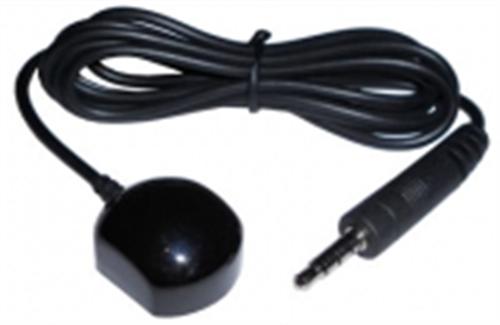What you see here is called an IR Target Cable. These used to be very common, and now you hardly ever see them. They’ve been replaced with RF remotes. In order to understand why, you need to look at these two pieces of technology and what makes one better than another.
An IR Target Cable is designed to replace the built-in IR target on a television, receiver, or any other piece of equipment. The IR target is the thing that receives the commands from a regular old remote. Think of it as an antenna, but designed for infrared and not radio waves. That’s not so far off. Since infrared is a “line-of-sight” technology, the remote needs to be able to see the target in order for it to work. If you’ve put a satellite receiver or something else behind a TV, the remote can’t see it (and, of course, neither can you) so you would run a target cable like this one to somewhere visible (like the bottom of the TV) and then everything would work.
This used to be a very common way to communicate within home theaters, but it’s far less common now. That’s because RF remotes really are better than IR ones.
An RF remote doesn’t use infrared flashes but instead communicates using a technology similar to a cordless phone. This is more complicated but you get a lot better range and the receiver can sit behind a wall, inside a cabinet, or anywhere out of sight. You don’t see IR Target Cable ports on a lot of equipment anymore, because they either use RF remotes or IP remotes (which basically put the remote signal over Wi-Fi, and that’s a subject for another article.)
If your remote doesn’t do RF, you’re in luck because you can convert from IR to RF very easily with a device like our NextGen Remote Extender. This little device easily converts any remote that runs on AA or AAA batteries into an RF remote. A little transmitter takes the place of the battery and a base station sits near the device you want to control and sends the infrared signal straight to it.
If you’re using the latest DIRECTV or DISH DVRs, the good news is that you have an RF remote right there. If you’re not, consider upgrading! It’s just the icing on the cake… there are a lot of other benefits as well.

